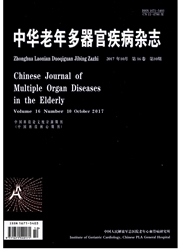

 中文摘要:
中文摘要:
Objective:To study the effects of inhibited Annexin A2(ANXA2) on human umbilical vein endothelial cells(HUVECs) in vitro.Methods:Short hairpin RNA(shRNA) targeting ANXA2 was designed and cloned into double marked lentvirial vector GV248 for RNAi to generate the recombinant expression plasmids,which were stably transfected into HUVECs.The protein and mRNA expression levels of ANXA2 were analyzed by western blotting and realtime polymerase chain reaction,respectively.Cell proliferation(cell counting kit-8 assay),apoptosis(flow cytometry analysis),the expression(western blotting) and the activity of easpases(enzyme-linked immunosorbent assay) were used to assess the effects of silencing ANXA2 on HUVECs in vitro.Results:The plasmids to express ANXA2-specific shRNA were constructed and were infected into HUVEC resulting in the stably transfected experimental(ANXA2-shRNA),control(eontrol-shRNA) and mock(no plasmid) cell lines,which were verified with western blot and real-time PCR.HUVEC/ANXA2-shRNA showed an inhibition rate 91.89%of ANXA2 expression compared to the mock HUVEC.ANXA2 silencing cell strain obviously presented a lower cell proliferation activity compared to the control and mock HUVECs,with an inhibition rate 82.35%on day 7 in vitro.FACS analysis indicated that the HUVEC/ANXA2-shRNA cells undergoing apoptosis increased by 102.61%compared to the mock HUVECs(P<0.01).Moreover,the activity levels of caspase-3,caspase-8 and caspase-9in HUVEC/ANXA2-shRNA cells were increased and the activated cleaved caspase-3,cleaved Caspase-8 and cleaved caspase-9 were upregulated evidently compared with that of the control and mock HUVECs by 56.29%,89.59%and 144.58%(P<0.01).Conclusions:shRNAmediated silencing of ANX A2 could not only be able to suppress HUVECs:proliferation but to upregulate the enzyme activity of easpases,which bring to an increase of cell apoptosis This work suggested that ANX A2 may represent a useful target of future molecular therapies.
 英文摘要:
英文摘要:
Objective:To study the effects of inhibited Annexin A2(ANXA2) on human umbilical vein endothelial cells(HUVECs) in vitro.Methods:Short hairpin RNA(shRNA) targeting ANXA2 was designed and cloned into double marked lentvirial vector GV248 for RNAi to generate the recombinant expression plasmids,which were stably transfected into HUVECs.The protein and mRNA expression levels of ANXA2 were analyzed by western blotting and realtime polymerase chain reaction,respectively.Cell proliferation(cell counting kit-8 assay),apoptosis(flow cytometry analysis),the expression(western blotting) and the activity of easpases(enzyme-linked immunosorbent assay) were used to assess the effects of silencing ANXA2 on HUVECs in vitro.Results:The plasmids to express ANXA2-specific shRNA were constructed and were infected into HUVEC resulting in the stably transfected experimental(ANXA2-shRNA),control(eontrol-shRNA) and mock(no plasmid) cell lines,which were verified with western blot and real-time PCR.HUVEC/ANXA2-shRNA showed an inhibition rate 91.89%of ANXA2 expression compared to the mock HUVEC.ANXA2 silencing cell strain obviously presented a lower cell proliferation activity compared to the control and mock HUVECs,with an inhibition rate 82.35%on day 7 in vitro.FACS analysis indicated that the HUVEC/ANXA2-shRNA cells undergoing apoptosis increased by 102.61%compared to the mock HUVECs(P<0.01).Moreover,the activity levels of caspase-3,caspase-8 and caspase-9in HUVEC/ANXA2-shRNA cells were increased and the activated cleaved caspase-3,cleaved Caspase-8 and cleaved caspase-9 were upregulated evidently compared with that of the control and mock HUVECs by 56.29%,89.59%and 144.58%(P<0.01).Conclusions:shRNAmediated silencing of ANX A2 could not only be able to suppress HUVECs:proliferation but to upregulate the enzyme activity of easpases,which bring to an increase of cell apoptosis This work suggested that ANX A2 may represent a useful target of future molecular therapies.
 同期刊论文项目
同期刊论文项目
 同项目期刊论文
同项目期刊论文
 期刊信息
期刊信息
